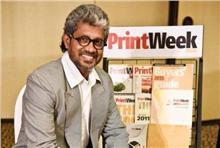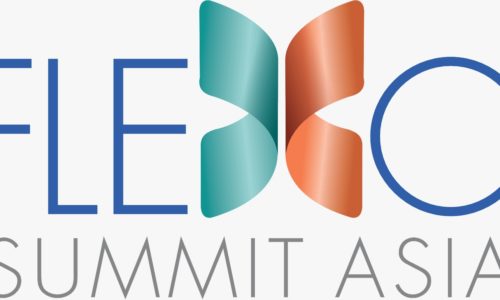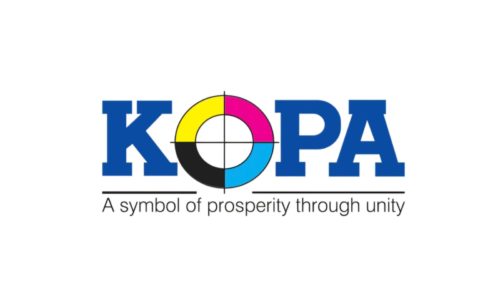
As the tenth edition of Pamex returns to Mumbai after a gap of nine years, Tushar Dhote, chairman and managing director, Dhote Offset Technokrafts, and president, Mumbai Mudrak Sangh and co-chairman, Pamex 2015, shares with PrintWeek India the plans for Pamex, the future of the industry and what makes Dhote Offset special.
PrintWeek India (PWI): Pamex is perhaps the 25th print show in India this year. How do you combat the trade show fatigue?
Tushar Dhote (TD): I am of the opinion that there should be only two big shows for printing and allied machinery, probably every alternate year. It will allow serious participation and focused footfalls. I know there are too many shows in print this year, but what makes Pamex different from others is that it is a brand of the AIFMP and is the show ‘of the printers, for the printers and by the printers’.
PWI: How does Pamex propose to improve the stake in the pie?
TD: We do foresee a good growth in the packaging and converting and labels in the coming years. So, this time, we have a theme of four verticals, namely, commercial and digital printing, package converting, narrow-web, and corrugation packaging.
PWI: A majority of Indian print firms are SMEs. What are the trends in the SME space in terms of print technology adoption?
TD: I understand that there is a serious gap in the funding available to the SME sector, but a good project, with a proper study in terms of ROI and technology change, keeping a futuristic view, is necessary for investment. A proper business development plan is necessary. There can be small group clusters with the help of friends and like-minded players in this industry to attract bigger investment for newer technologies. I believe it can be done.
PWI: During the last edition, there were some ‘problems’ with Pamex …
TD: The Pamex brand never had a problem. It was the event management company, which could not perform or give its 100% to the brand. There were some service issues to exhibitors, where commitments were not fulfilled, or differential rate was offered to preferential people.
PWI: During the last edition, there were some ‘problems’ withPamex. How have you resolved it?
TD: On becoming the co-chairman of Pamex 2015, one thing that I did was not to negotiate the rate and offerings and tried to build back the confidence among the exhibitors, quoting them the success of the last Pamex held in Mumbai in 2006. Both MMS and BMPA are offering their local support to Pamex. Moreover, we created core teams among the distributors and manufacturers and held meetings in Mumbai and Delhi to understand what they needed differently this time.
PWI: What is the history of Pamex which readers and visitors should know about?
TD: The first Pamex was held in 1984 at Kolkata and the first big success came in Pamex 1986, held at Nehru Centre, Mumbai. Then the later editions were held in Bangalore. After a gap of 12 years, it was once again held in Mumbai in 2006, where the BMPA and MMS together managed the event. It was perhaps the most successful of all the Pamex shows so far, with Heidelberg displaying its SM 74 five-colour coater. After 2006, Pamex was held every two years, in 2008, 2010, 2012, at Pragati Maidan, New Delhi. The 2014 edition was held in Noida.
PWI: Back to you, tell us about the day-to-day running at the MMS?
TD: MMS has a young and fresh managing committee for the year 2015-2017, people who are passionate and who would like to bring in a change in how the association works.
PWI: What’s new?
TD: This year, a historical decision was taken on 30 September at the BMPA’s AGM, to combine the two forces, BMPA and MMS, to work together towards achieving a common goal for the printers of Mumbai city.
(Related: BMPA and MMS news)
PWI: What are the benefits of a BMPA-MMS partnership?
TD: The reason for coming together is to strengthen our representation collectively, to build confidence among our fellow printers by working as a team. We also show our seriousness to manufacturers and trade suppliers in supporting fair pricing, to make a strong presence at the national level in the AIFMP and finally, to build an intelligent workforce through proper training and education.
PWI: What are the ambitions for the DOT business?
TD: We have the ambition to touch the sky. But it is not always possible for an SME as there is always a funding problem. We are looking for a stake-partner who will share our vision and will take this company ahead utilising the stake partner’s expertise in business direction. The partner may not necessarily be from the industry, but should have a good financial background and business acumen to guide the company ahead.
(Related: More DOT news)
PWI: You’ve had some tough years, haven’t you? With the floods at DOT in 2005.
TD: Tough times are still on, but working conditions and workflows have improved for a good foundation for times ahead.
PWI: Surendra Dhote sketched the Dhote family tree for Ramu Ramanathan. It is huge and very impressive. What does theDhote legacy mean’s to you?
TD: The Dhote name was synonymous with printing in the early seventies. The legacy means a lot to Uday and me; it has given us the deep-rooted culture of the printing business, which remains unchanged until today. Unfortunately, in the early eighties, it started disintegrating, and nuclear models started to form in all parts of India. Ours remains one of the very few presses alive today, which are run by third generation print families.
Top ten product highlights at Pamex
Autoprint Machinery Manufacturers will showcase its premium range of products, which include the Autoprint Repetto 65 V2 automatic sheetfed flatbed die-punching and creasing machine, the 1520 Colt single-colour mini offset press with VDP attachment, the Dion 450+, and the Checkmate 50 print inspection machine for folded cartons, among others.
Canon India, is the third biggest exhibitor at the show. In 2010, Canon acquired Océ, and combined forces to bring together customer input and intensive research. The result: Océ VarioPrint i300 sheetfed inkjet press. The Océ VarioPrint i300 prints up to 294 (letter) images-per-minute. It handles paper format sizes up to 13.9 inch x 19.7 inch (B3) and targets heavy production volumes of 1-10 million pages per month. Expect to see the press at the show.
HP India, with 495 sq/ft space is the biggest exhibitor at the show, as of now. For the first time in India, HP will have on display the HP Indigo 10000 press. The press has a maximum sheet size of 750x530mm, prints up to seven colours and has a monthly duty cycle of 2m sheets. There are two HP Indigo 10000 in India, one at Mazda Imaging and the second at Glo Digital.
Insight Communication will bring the Komori brand of presses at the show. The highlight of the Insight stand will be the Komori Imperia IS 29 digital press, which will get a pre-launch during the show. Insight will start taking Imperia booking from February 2016.
Line O Matic, which recently received an award for excellence in export performance and promotion for 2013 by Federation of Gujarat Industries, will showcase its new Bolt RB 104. With a speed of 500 metres per minute with 60 strokes per minute, the machine can convert up to 20-22 tonne of paper in a day, depending on the grammage. The reel width of Bolt RB104 is 104cm, providing the user with an option of maximum five-ups.
Monotech Systems has planned to launch a few products at Pamex, while showcasing its popular line of representative products like Scodix, Focus Label’s flexo label presses, and 3D printers. Also seen will be its own manufactured inkjet printing solutions – Jetsci, which has seen close to 35 systems installed at more than 20 customer sites.
Ricoh India’s focus at the second biggest stand at the show will be on its new kit Pro C9100 series and the Pro C7100x, the white and clear toner press launched late last year at the Eastern Printpack in Kolkata. Also in action will be Ricoh’s wide-format press with the new Geljet print head. The new printhead holds 1.27-inch long nozzle rows containing 384 nozzles, capable of distributing more ink, faster with each pass.
Srinivas Papers will bring Polyart, Arjobex’s range of synthetic papers. The company will introduce Arjobex’s expanded range of IML product offering, Polyart IML HD to the Indian market. The Polyart IML HD was launched at Labelexpo Europe 2015. Srinivas will also showcase Paper Tyger, a specialised laminated substrate and HB Fuller high-performance adhesives at the show.
Welbound Worldwide will demonstrate PUR binding machines, combining Henkel and Nordson technologies, to help explore possibilities of binding with any substrates. Also see a range of post-press binding machines at the Welbound stand.
Zhongke, a Chinese company will use Pamex to launch its Indian JV, Zongke India, and will display its complete range of case makers, rigid box makers, lamination and grooving machines.
Pamex over the years
Pamex 1979, held in Chennai
Pamex 1983, held in New Delhi
Pamex 1983, held in New Delhi
Pamex 1987, held in Mumbai
Pamex 1991, held in Kolkata (organised by WBMPA)
Pamex 1997, held in Bangalore (organised by KSPA)
Pamex 2006, held in Mumbai (organised by MMS and BMPA)
Pamex 2010, held in New Delhi
Pamex 2011, held in New Delhi
Pamex 2013, held in Noida
Pamex at grassroots
Ahead of Pamex 2015, to be held from 9-12 December at Bombay Exhibition Centre, Mumbai, the Pamex Grassroot Contact Programme, planned for Maharashtra and Tamil Nadu, will drive latest printing technologies to the grassroots. The event will reach the doorsteps of eleven towns of Maharashtra to disseminate information on the modern methods, which are affordable and attainable and which can be adopted by the emerging printers to be at par with the rest of the world. The event will reach the doorsteps of six towns in Tamil Nadu to enlighten the printers of the area with information on the modern technology, which can be adopted by them for better opportunities and profit.
Nashik, Ahmednagar, Nanded and Aurangabad saw a huge delegation, specially from the generation-next in the age group of 26 to 32 years. Many of them were electronic engineers, holders of master’s degree in agriculture, and one of them a textile designer. What impressed me was they were all so starved for knowledge and their interest in cluster formation to ease the huge investment that is needed in this capital intensive print industry. I have a feeling that the real progress of our future Print is in these tier-2 and tier-3 cities, where the land cost and labour is affordable and formation of clusters means building of team and transparency of operation in our work culture.
In Maharashtra
Nashik, 9 October

Ahmednagar, 10 October

Nanded, 15 October

Aurangabad, 18 October

Nagpur, 24 October
Akola, 25 October
Satara, 27 October
Kolhapur, 28 October
Belgaum, 29 October
Solapur, 4 November
In Tamil Nadu
Kochi 10 October
Puducherry, 18 October
Dindigul, 27 October
Thoothukudi, 28 October
Vellore, 30 October
Thiruvannamalai, 31 October
Tushar Dhote’s message to the Indian print industry:
My message for my friends in the print fraternity is very simple. We need to stick to the basics and develop a long-term plan based on sound research on technology and a proper ROI for investment.
I believe there is a big scope for print in packaging and digital forms of printing. Please do not compete on rate alone, as it is a killing factor. A proper business development plan is necessary to remain profitable.
Courtesy: PrintWeek
http://www.printweek.in/Feature/398285,pamex-returns-to-mumbai-with-no-compromises—the-noel-dcunha-sunday-column.aspx



